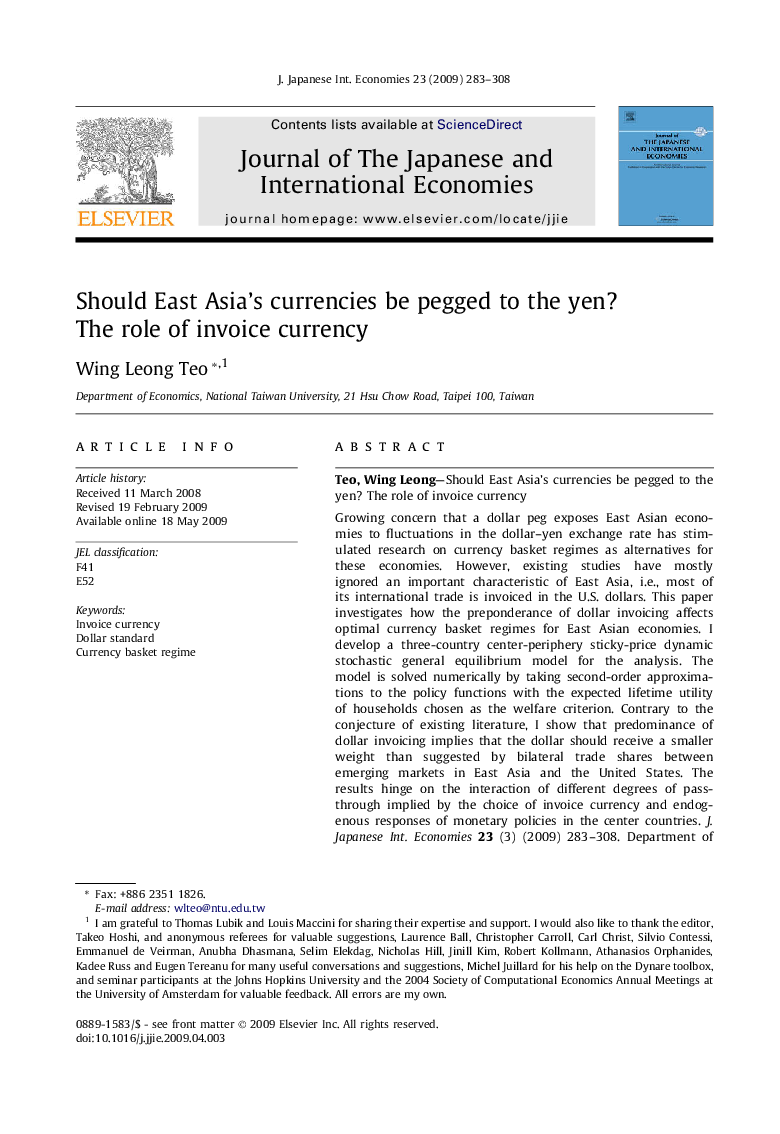| Article ID | Journal | Published Year | Pages | File Type |
|---|---|---|---|---|
| 965045 | Journal of the Japanese and International Economies | 2009 | 26 Pages |
Growing concern that a dollar peg exposes East Asian economies to fluctuations in the dollar–yen exchange rate has stimulated research on currency basket regimes as alternatives for these economies. However, existing studies have mostly ignored an important characteristic of East Asia, i.e., most of its international trade is invoiced in the U.S. dollars. This paper investigates how the preponderance of dollar invoicing affects optimal currency basket regimes for East Asian economies. I develop a three-country center-periphery sticky-price dynamic stochastic general equilibrium model for the analysis. The model is solved numerically by taking second-order approximations to the policy functions with the expected lifetime utility of households chosen as the welfare criterion. Contrary to the conjecture of existing literature, I show that predominance of dollar invoicing implies that the dollar should receive a smaller weight than suggested by bilateral trade shares between emerging markets in East Asia and the United States. The results hinge on the interaction of different degrees of pass-through implied by the choice of invoice currency and endogenous responses of monetary policies in the center countries.
